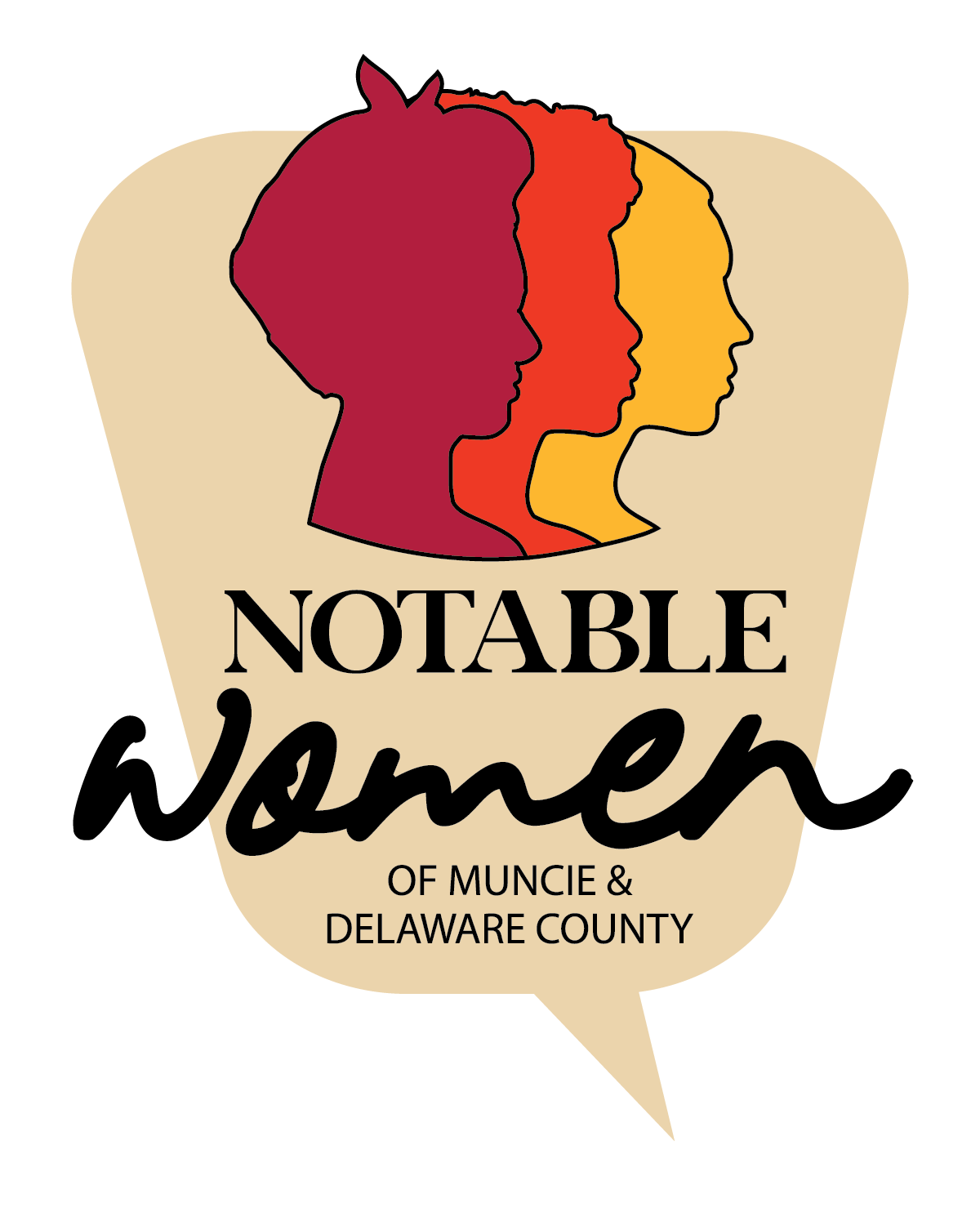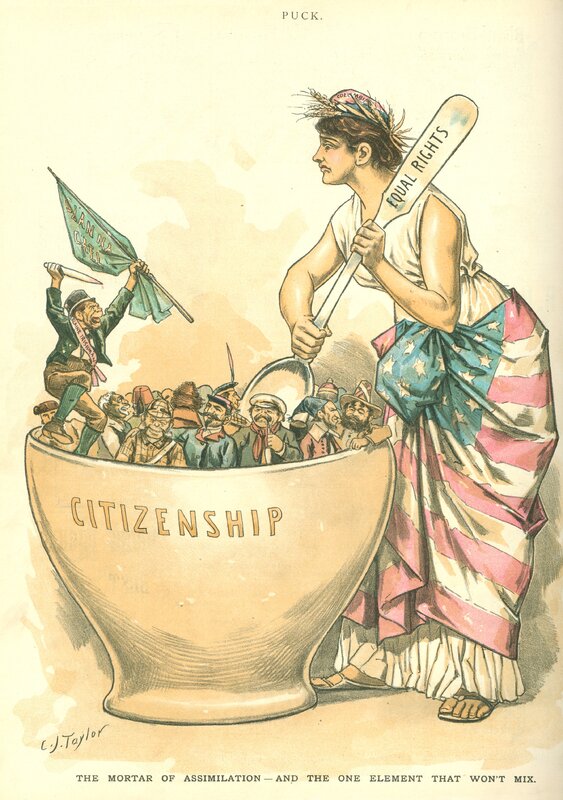Introduction
Women, Work, and Ethnic Diversity
This exhibit explores the lives of Muncie's women through two themes: work and ethnic diversity. Between 1860 and 1910, the United States attracted 43 million immigrants, whose labor contributed to the country's powerful industrialization. At the same time, tens of thousands of African-American families began to move northward, culminating in the first Great Migration from World War I to 1930 that brought 50,000 African Americans to Indiana.
Inevitably, these changes prompted debate and anxiety in both public and political venues. Political cartoons from this period reflect these discussions and the caricatures applied to ethnic groups that contributed to the American workforce.
The political cartoon above shows us how many immigrant groups were publicly portrayed: German, African, Chinese, Jewish, and Irish, among others. This cartoon also shows us that immigrant workers were understood overwhelmingly to be male.
The only woman in this cartoon represents America, who steadfastly churns the tub of immigrants with a paddle labeled "Equal Rights." While the caricatured figures stand or wriggle in the tub, America works. Her muscled arms remind us that immigrant women were an equally important part of the economy and the American narrative of immigration. Just like native-born women, they worked as laundresses, in shops that they owned with their husbands, in factories, and in the home.
This exhibit follows the lives of six women, who lived and worked in Muncie, Indiana, between 1870 and 1925. This period encapsultes the height of industrial and ethnic change, as well as the time when Robert and Helen Lynd visited and researched their famous study, entitled Middletown: A Study in American Culture (1929). In contrast to the Lynds' conclusion that Muncie was a fairly homogenous community, this exhibit shows the city's continued ethnic diversity.
Town On Fire: Biographies of Six Working Women
As you move through this exhibit, remember that although each woman's experience was different, she encountered a version of the caricatures presented above. As African Americans, Cornelia Frazier and Ruby Leota McCray surely encountered racial prejudice. As a Jewish businesswoman, Sallie Harris Herrman likely witnessed antisemitism. As a rare Chinese immigrant in Muncie, Lee Shee Chin undoubtedly attracted curiosity. As the daughter of German immigrants, Mabel Keuchmann combined her European heritage with American cultural expectation. Finally, Mary Caroline Smith embodied a different sort of gender-based challenge that all working women experienced.
Together, their biographies help us learn more about life at a time of great change and see that some discussions remain unfinished. Immigration, work, and expectations for women remain important topics of discussion in the twenty-first century.
Alongside each woman's biography is a discussion by the principal researchers about how the research and narrative came together. Each conversation, like each woman, is unique and offers an opportunity to see how the historians asked questions, visited archives, and weighed evidence. This discussion of the methodology used to research the women is presented here as a means to better understand the historian's work, and how and why that work matters.
Click "Cornelia Frazier" in the side menu to learn more about our first notable woman.

